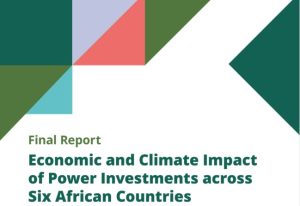Lessons in impact reporting: how impact investors can raise the bar
As we are nearing the end of the year, impact investors around the globe start the planning process for reporting on their achievements and impact made in 2024. Writing a good impact report presents a conundrum for many asset managers. As the impact investing market continues to expand, investors are becoming more demanding, regulatory disclosure requirements are tightening, and industry standards are evolving. Creating a report that is both clear and comprehensive can feel like a balancing act. To help navigate this process, we offer three key lessons drawn from our experience in the impact reporting field that can help in standing out from your peers and make a meaningful contribution with your impact report.
1. Focus on what matters the most
The primary use of an impact report is to transparently communicate around impact management practices and impact achieved. Rather than merely showcasing investment outcomes, a good impact report reflects impact management practices and processes. It serves as a powerful tool to communicate the asset manager’s impact thesis and strategy, demonstrating alignment with investor and beneficiary expectations, and creates a space for transparency and public accountability, in line with good governance principles.
Impact reports should be concise and easily comprehensible, emphasizing key pathways to impact and the supporting them with evidence. Using succinct and clear language allows the reader to distil meaningful insights from it. A check-box compliance exercise with overwhelming amount of datapoints detracts from key insights that can effectively guide capital allocators and managers. In short, leave those extensive data tables to the annex!
2. Embrace the measurement challenges
We are all familiar with the difficulties of impact measurement. We also know that it is notoriously hard to substantiate causal impact claims in the realm of development (see for example the Nobel-prize winning work on the experimental approach to measuring poverty alleviation). At the same time, impact investors face the (financial and operational) challenge of extracting meaningful data from portfolio companies, especially amid the plethora of competing reporting and disclosure requirements.
So, it is only natural that impact investors like to highlight their strengths and achievements in their reports. However, failing to own up to the challenges they face is a great missed opportunity. With the maturation of the impact investing market, those who would like to remain credible will have to be transparent to where they fall short in their impact measurement. As our managing partner, Willem Vosmer, put it “only honest impact investors will survive and thrive in the future”. Highlighting only successes, while ignoring challenges or trade-offs, can create an impression of impact-washing and undermine an impact report’s credibility. It is essential to address openly the dilemmas and compromises of impact management, fostering trust and authenticity, enabling transparent and constructive discussions among peers and creating opportunities to learn from each other.
3. Create public accountability for your commitments
A common mistake in impact reporting is overlooking future commitments. While impact reports are a great opportunity for an impact investor to publicly showcase the achievements and challenges faced and overcome, an entirely backward-looking report can fall flat. Without a forward-looking perspective, readers are often left wondering, “So what?”
We believe the ultimate test of a strong impact management system lies not in the detail of the evidence gathered, but in how effectively it informs decision-making. Is the data collected and the lessons learned being translated into strategic actions? A public-facing impact report offers an ideal opportunity for impact investors to demonstrate their commitment to learning and accountability, showcasing how they plan to raise their ambitions, address challenges, and improve in the coming year based on the evidence presented.

















